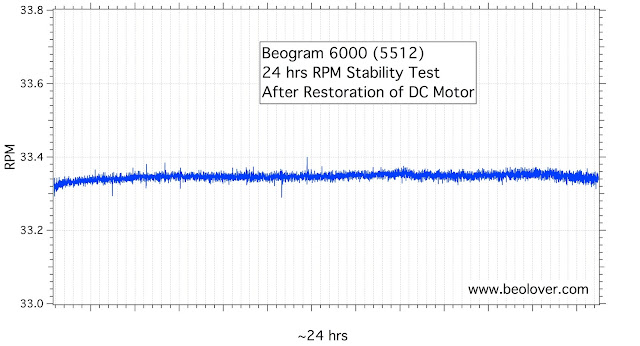After rebuilding the PCB and replacing the light bulbs in the RPM trimmer panel in the Beogram 6000 (5512) that I am restoring right now, it was time to restore the DC motor and do a RPM stability test of the platter drive system. RPM stability in DC motor Beograms is mainly affected by three components: Dry bearings in the motor, corroded relay and trimmers, and thermal issues caused by the incandescent light bulbs in the trimmer panel.
This shows the extracted motor:
It needs to be fully disassembled to get the Oilite sleeve bearings out:
The bearings are the two small donuts on the black pad. Submerging them in motor oil and pulling a vacuum started the oil infusion process:
This is a beautiful example of dry bearings. The bubbles represent the escaping air drawn out by the vacuum, which is then replaced by oil. Once the bubbling stops after 12-24 hrs, the process is completed and the porous brass bearing material ("Oilite") is again full of oil, ready for another 30 years of duty. This shows the bearings after extracting them from the oil one day after. A bit like french fries...;-)
Then it was time to reassemble the motor and subject it to a 24 hrs RPM stability test. This shows the BeoloverRPM device in action that I developed a while ago:
While it is very convenient for precision adjustment of the RPM, its main function is to log the RPM over time. This allows the generation of graphs showing the stability of the RPM over time, such as the one measured with the above motor:
This curve shows that the RPM is very stable, and that the restoration of the platter drive system was successful.







very interesting
ReplyDeletebut what it does float
speed of the engine ..variazione ..etc of hysteresis?
the dc motor control are pwm..how the motor speed is sensitive only by pwm control?
ReplyDeletemy email..giovanni118882@tiscali.it
ReplyDeletePlease send me your email..thank's..
ReplyDelete